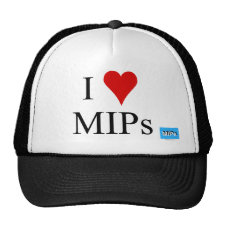
Authors: Hassanpour S, Taghizadeh M, Yamini Y
Article Title: Magnetic Cr(VI) Ion Imprinted Polymer for the Fast Selective Adsorption of Cr(VI) from Aqueous Solution.
Publication date: 2018
Journal: Journal of Polymers and the Environment
Volume: 26
Issue: (1)
Page numbers: 101-115.
DOI: 10.1007/s10924-016-0929-6
Abstract: In this study, a novel magnetic Cr(VI) ion imprinted polymer (Cr(VI)-MIIP) was successfully synthesized and used as a selective sorbent for the adsorption of Cr(VI) ions from aqueous solution. It can be synthesized through the combination of an imprinting polymer and magnetic nanoparticles. The high selectivity achieved using MIIP is due to the specific recognition cavities for Cr(VI) ions created in Cr(VI)-MIIP. Also, the magnetic properties that could be obtained using magnetic nanoparticles, helps to separate adsorbent with an external magnetic field without either additional centrifugation or filtration procedures. The magnetic Fe3O4 nanoparticles (MNPs) were synthesized using an improved co-precipitation method and modified with tetraethylorthosilicate (TEOS) before imprinting. The magnetic Cr(VI) ion imprinted polymer was prepared through precipitation copolymerization of 4-vinylpyridine as the complexing monomer, 2-hydroxyethyl methacrylate as a co-monomer, the Cr6+ anion as a template, and ethylene glycol dimethacrylate (EGDMA) as a cross-linker in the presence of modified magnetite nanoparticles. This novel synthesized sorbent was characterized using different techniques. Batch adsorption experiments were performed to evaluate the adsorption conditions, selectivity, and reusability. The results showed that the maximum adsorption capacity was 39.3 mg g-1, which was observed at pH 3 and at 25 °C. The equilibrium time was 20 min, and the amount of adsorbent which gave the maximum adsorption capacity was 1.7 g L-1. Isotherm studies showed that the adsorption equilibrium data were fitted well with the Langmuir adsorption isotherm model and the theoretical maximum adsorption capacity was 44.86 mg g-1. The selectivity studies indicated that the synthesized sorbent had a high single selectivity sorption for the Cr(VI) ions in the presence of competing ions. Thermodynamic studies revealed that the adsorption process was exothermic (Δ H < 0) and spontaneous (Δ G < 0). In addition, the spent MIIP can be regenerated up to five cycles without a significant decrease in adsorption capacity
Template and target information: chromium ion, Cr(VI)
Author keywords: Chromium, ion imprinted polymer, magnetic separation, adsorption, aqueous solution



Join the Society for Molecular Imprinting

New items RSS feed
Sign-up for e-mail updates:
Choose between receiving an occasional newsletter or more frequent e-mail alerts.
Click here to go to the sign-up page.
Is your name elemental or peptidic? Enter your name and find out by clicking either of the buttons below!
Other products you may like:
 MIPdatabase
MIPdatabase









